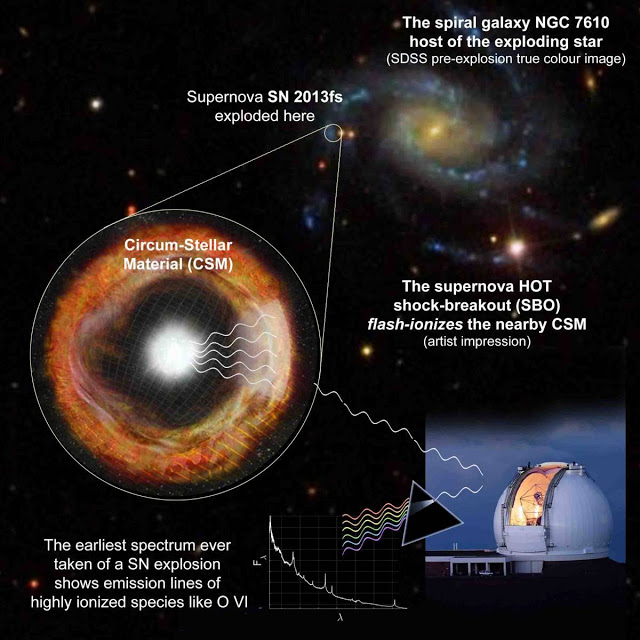

| Online: | |
| Visits: | |
| Stories: |

| Story Views | |
| Now: | |
| Last Hour: | |
| Last 24 Hours: | |
| Total: | |
Before a Supernova, Stars Show Signs of Instability for Months

Credit Weizmann Institute of Science
New research led by Weizmann Institute of Science researchers shows that the stars that become so-called core-collapse supernovae might already exhibit instability for several months before the big event, spewing material into space and creating a dense gas shell around themselves. They think that many massive stars, including the red super-giants that are the most common progenitors of these supernovae, may begin the process this way.
This insight into the conditions leading up to core collapse arose from a unique collaboration called the Palomar Transient Factory, a fully automated sky survey using the telescopes of the Palomar observatory in southern California. Astrophysicists halfway around the globe, in Israel, are on call for the telescope, which scans the California night sky for the sudden appearance of new astronomical “transients” that were not visible before – which can indicate new supernovae.
In a study recently published in Nature Physics, Yaron, Weizmann Institute researchers Profs. Avishay Gal-Yam and Eran Ofek, and their teams, together with researchers from the California Institute of Technology and other institutes in the United States, Denmark, Sweden, Ireland, Israel and the UK, analyzed the unique dataset they had collected from the very first days of the supernova.
The time window was crucial: It enabled the team to detect material that had surrounded the star pre- explosion, as it heated up and became ionized and was eventually overtaken by the expanding cloud of stellar matter. Comparing the observed early spectra and light-curve data with existing models, accompanied by later radio observations, led the researchers to conclude that the explosion was preceded by a period of instability lasting for around a year. This instability caused material to be expelled from the surface layers of the star, forming the circumstellar shell of gas that was observed in the data. Because this was found to be a relatively standard type II supernova, the researchers believe that the instability they revealed may be a regular warm up act to the immanent explosion.
“We still don’t really understand the process by which a star explodes as a supernova,” says Yaron, “These findings are raising new questions, for example, about the final trigger that tips the star from merely unstable to explosive. With our globe-spanning collaboration that enables us to alert various telescopes to train their sights on the event, we are getting closer and closer to understanding what happens in that instant, how massive stars end their life and what leads up to the final explosion.”
Contacts and sources:
Gizel Maimon
Source:


